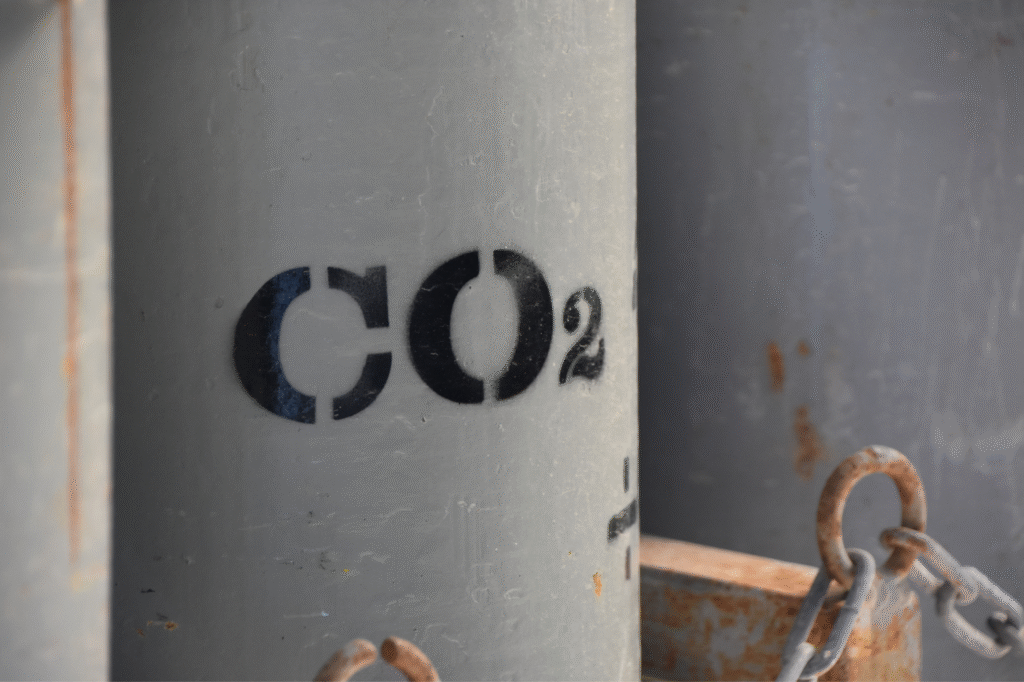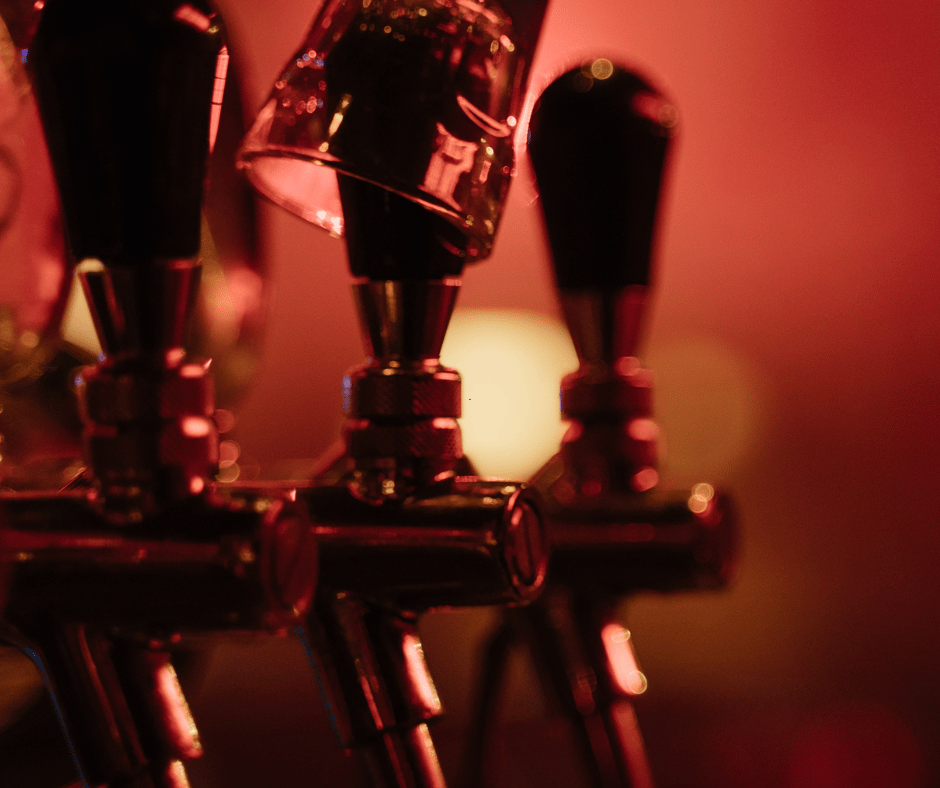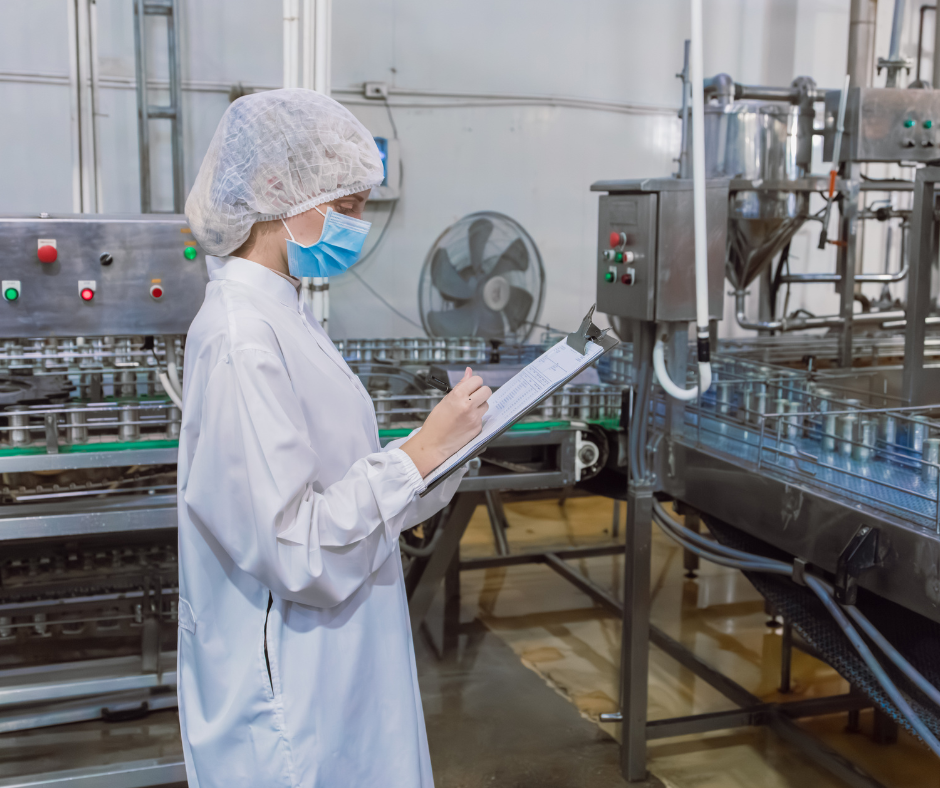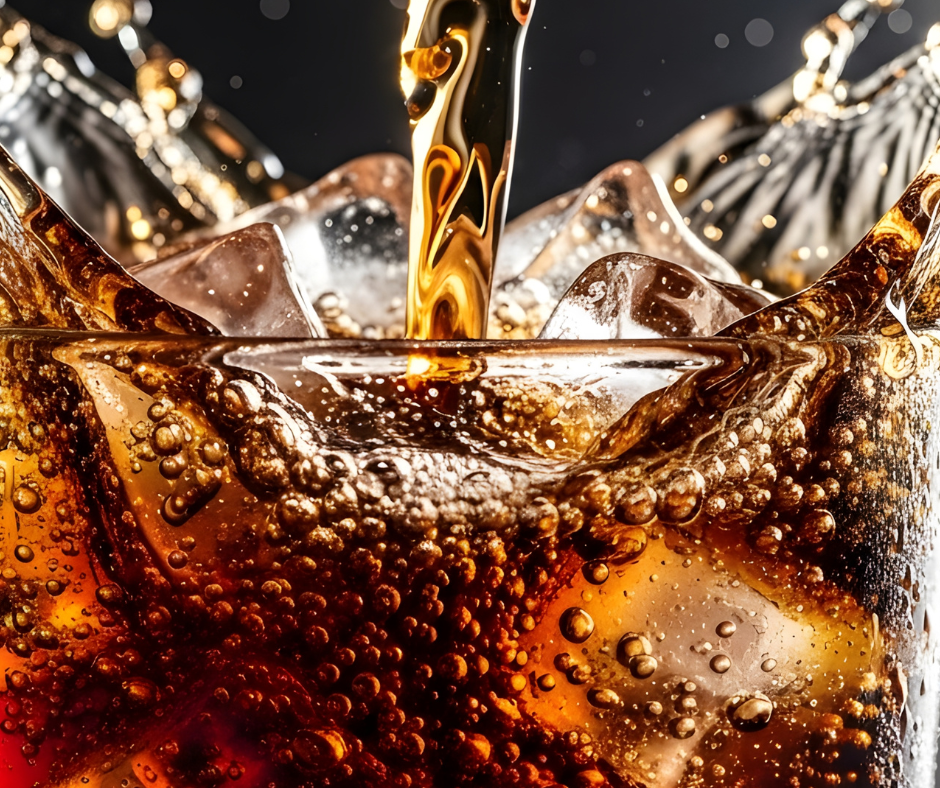Ever wondered why one venue runs out of gas mid-service, while another pours perfectly all night? It often comes down to choosing the right CO₂ tank size — and using it properly.
In drinks dispensing, CO₂ plays a vital role. Whether you’re pouring pints in a busy pub, bottling soft drinks at scale, or serving sparkling wine at a restaurant, the size and setup of your gas supply can make or break the experience.
This guide is written for brewers, beverage manufacturers, bar staff, and hospitality teams who want to get it right.
In this post, you’ll learn:
- Why CO₂ is essential in drinks dispensing
- What tank sizes are available and where they’re used
- How to choose the right CO₂ bottle for your system
- How long each tank typically lasts
- The role of gas purity in taste and safety
- Best practices for setup, storage, and sustainability
Let’s break down the essentials, starting with why CO₂ matters so much to the drinks industry.
Why CO₂ Matters in Beverage Dispensing
Carbon dioxide (CO₂) does more than push liquid from keg to tap, it shapes the entire drinking experience. From lively carbonation in soft drinks to the perfect pint of beer, CO₂ plays a central role in both production and presentation.
The role of CO₂ in drinks
CO₂ is used in the drinks industry in two main ways:
- Carbonation – Adds the fizz to beer, cider, soft drinks, and sparkling wine
- Pressurised dispensing – Moves liquid through lines and out of taps, while preserving freshness
When used correctly, CO₂ protects a drink’s texture, flavour, and aroma. The wrong setup can lead to flat pours, off-flavours, or excessive foaming.
Tank size impacts quality and cost
The size of your CO₂ tank isn’t just about volume. It affects:
- How often you replace tanks – Small venues may manage with a 2kg cylinder; large-scale operations need 10–20kg or more
- Gas delivery consistency – A poorly matched system can cause pressure drops or over-carbonation
- Operational cost – Too many small tanks increase handling costs, while oversized tanks take up valuable space
Matching the right tank size with your beverage system is key to balancing efficiency and performance.
Purity is just as important as pressure
CO₂ purity is often overlooked — but it’s critical. Low-purity gas can contain trace contaminants that affect taste, smell, and safety. This is where Sure Purity comes in. Our advanced Carboguard filtration systems, help you meet strict industry standards while delivering consistently clean, great-tasting drinks.

Common CO₂ Tank Sizes and Their Applications
CO₂ Tank Sizes Available in the UK
CO₂ cylinders come in a range of sizes to suit different beverage systems. From small kegerators to industrial bottling lines. The most common CO₂ tank sizes in the UK include:
- 2kg CO₂ Cylinder
Ideal for home bars, single-line kegerators, and low-volume café setups
Approx. gas volume: 1,000–1,300 litres
Height: ~45cm | Diameter: ~10–15cm - 6.35kg (14lb) Cylinder
Common in pubs and small restaurants using one or two taps
Approx. gas volume: 3,000–4,000 litres
Height: ~70cm | Diameter: ~15–20cm - 10kg Cylinder
Suitable for medium-volume bars or breweries with multiple dispense lines
Approx. gas volume: 5,000–6,500 litres
Height: ~80cm | Diameter: ~20cm - 20kg Cylinder
Designed for high-volume venues, packaging lines, and beverage manufacturers
Approx. gas volume: 10,000–13,000 litres
Height: ~90–100cm | Diameter: ~25cm - Industrial Bulk Cylinders
For large-scale beverage production or multi-system venues
Custom volumes: Often 34kg, 50kg or more
Require secure storage and specialist fittings
Standard fittings:
Most beverage-grade CO₂ tanks in the UK use BS341 No. 8 (W21.8 x 1/14”) valves. Ensure your regulator matches the valve thread to avoid leaks or poor pressure control.
Note: A cylinder’s full weight includes the gas and the steel or aluminium bottle itself — always check the usable CO₂ capacity, not just total weight.
Choosing the Right Size for Your Setup
Choosing the correct tank size isn’t just about how much gas you need. You need to match the tank to your operation’s scale, usage pattern, and available space.
Small setups (2–6kg)
- Who it suits: Home brewers, pop-up bars, coffee shops, or pubs with a single draught line
- Pros: Compact, easy to store, quick to swap
- Cons: Frequent refills needed if used daily
Recommended tanks: 2kg, 6.35kg cylinders - Use case example: CO₂ bottle for kegerator or single-beer tap café
Medium venues (6–10kg)
- Who it suits: Pubs, taprooms, small breweries with 2–4 lines
- Pros: Good balance of capacity and space-saving
- Cons: Still needs regular monitoring in busy venues
- Recommended tanks: 6.35kg, 10kg cylinders
- Use case example: CO₂ tank for beer dispenser in high-turnover pub

Large venues or production lines (20kg+)
- Who it suits: Breweries, bottling plants, stadiums, fast food chains
- Pros: Fewer changeovers, better efficiency for continuous use
- Cons: Heavier, needs proper storage area
- Recommended tanks: 20kg, bulk or manifolded systems
- Use case example: Multiple-line pub system or industrial soft drink plant
Space-saving tip: Always measure your gas cupboard or keg room before ordering a larger cylinder. A tight fit can make safe handling and pressure adjustment difficult.
Whether you’re running a home tap or managing a full production floor, picking the right CO₂ tank size improves system uptime, helps reduce waste, and ensures consistent dispense pressure.
How Long Does a CO₂ Tank Last?
There’s no one-size-fits-all answer to how long a CO₂ tank lasts. It depends on how you use it. The type of beverage, the number of taps, the pressure settings, and how busy your venue is all play a role.
What Affects CO₂ Usage?
Several key factors influence how quickly you’ll get through a tank:
- Beverage type:
Carbonated soft drinks and lagers often need more CO₂ than cask-style ales. - Serving pressure:
Higher pressure (PSI or bar) means more gas is used. This is common in long-draw beer systems or high-efficiency setups. - Number of taps or kegs:
More dispense points = more gas needed to push and preserve. - Flow rate and frequency:
Busy bars use more gas during peak hours. A quiet week may stretch a tank much longer.
CO₂ Tank Lifespan Estimates (Approx.)
Here’s a rough guide based on typical usage patterns in draught systems:
| Tank Size | Litres of Beer Dispensed | Typical Usage Scenario |
| 2kg | 400–500 litres | Single keg or kegerator setup |
| 6.35kg | 1,200–1,500 litres | Small pub or café with one or two lines |
| 10kg | 2,000–2,500 litres | Medium pub or brewery taproom |
| 20kg | 4,000–5,000 litres | High-volume bar, brewery, or beverage plant |
Note: Figures assume CO₂ is used for both pushing beer and maintaining carbonation at approx. 10–14 PSI.
How to Calculate Your CO₂ Usage
To get a more accurate idea of how long your tank will last:
- Know your pressure setting – Measured in PSI or bar, your regulator tells you how hard CO₂ is being pushed into the system.
- Estimate beer flow – For example, 1 pint (568ml) per pour x number of pints per day.
- Multiply by taps – Each line draws its own supply of CO₂.
- Factor in loss – Small leaks or inefficient seals can waste gas over time.
Some venues track this weekly to plan refills, reduce downtime, and manage costs.
Monitoring Tank Levels
Most CO₂ tanks don’t come with a precise gas level indicator, but you can:
- Weigh the tank regularly (tare weight is stamped on the bottle)
- Use dual-gauge regulators to monitor tank pressure (a sudden drop often means it’s nearly empty)
Log dispense volumes per keg to estimate usage patterns
Using gas efficiently not only saves money — it protects beer quality by maintaining correct carbonation and reducing foaming or flat pours.

The Importance of Gas Purity in CO₂ Tanks
It’s not just the size of your CO₂ tank that matters — it’s what’s inside. Poor-quality gas can taint the drinks you serve, damage equipment, and put health at risk. That’s why food-grade CO₂ and reliable filtration are non-negotiable in professional beverage systems.
What Happens If CO₂ Isn’t Pure?
Low-purity or industrial-grade CO₂ often contains trace contaminants that aren’t safe — or suitable — for beverages. These can include:
- Benzene – A carcinogenic solvent that imparts a chemical taste.
- Methanol – Toxic in even small amounts and potentially harmful if consumed.
- Sulphur compounds – Cause rotten egg odours that ruin aroma and flavour.
- Aromatic hydrocarbons – Lead to strange aftertastes and pose health concerns.
- Oil or moisture carryover – From compressors or cylinders, affecting both taste and foam stability.
Even trace levels can spoil carbonation, flatten beer foam, or introduce unexpected odours. Over time, this leads to customer complaints, product waste, and reputational damage.
What Makes CO₂ “Food Grade”?
Food-grade CO₂ must meet strict international standards — including EIGA (European Industrial Gases Association) and ISBT (International Society of Beverage Technologists) specifications. These bodies set maximum limits for contaminants to ensure gas is safe and suitable for human consumption. We talk about co2 purity measurements here.
But even certified food-grade CO₂ can become contaminated en route. Through ageing cylinders, dirty regulators, or shared gas lines. That’s why on-site filtration is essential.
Sure Purity’s Carboguard: Trusted Gas Filtration
Our Carboguard CO₂ filters & Carboguard Mini Filters are designed specifically for beverage gas systems. Installed at the point of use, they:
- Remove harmful substances like benzene, methanol, and sulphur compounds.
- Protect product integrity by ensuring clean, odourless gas.
- Comply with global food and beverage standards.
- Extend equipment life by preventing oil or moisture ingress.
Integrating CO₂ Tanks Into Your Beverage Dispensing System
Setting up a CO₂ system correctly is key to maintaining consistent pour quality and protecting both your product and equipment. A poor connection or pressure imbalance can lead to flat beer, excessive foam, or gas leaks. All of these cost time and money.
How a Beverage Gas System Works
A typical draught beer setup using CO₂ includes the following components:
- CO₂ Tank – Contains compressed, food-grade carbon dioxide.
- Regulator – Controls pressure released from the tank into the system.
- Gas Line – Connects the regulator to the keg coupler.
- Keg Coupler – Feeds CO₂ into the keg to push beer out.
- Beer Line – Carries beer from keg to tap.
- Tap or Faucet – Where the beer is poured for service.

Best Practices for Setup and Maintenance
Setup and Fitting
- Use appropriate connectors: Ensure fittings match your tank, regulator, and keg type (e.g. DIN, BS valves).
- Secure all lines tightly: Loose fittings cause leaks and pressure loss.
- Position tanks upright in a safe, well-ventilated area away from heat sources.
Pressure Settings
- Most beer systems run between 10–14 PSI (0.7–1 bar), depending on temperature and style.
- Too much pressure causes foaming; too little leads to flat beer.
- Use dual-gauge regulators to monitor tank pressure and output pressure accurately.
Leak Checks
- Test connections using soapy water — bubbling indicates a leak.
- Regularly check all valves, couplers, and seals for wear or damage.
Safety Valves and Storage
- Never over-tighten regulators or fittings.
- Use tanks with certified safety relief valves.
- Store cylinders upright, chained or strapped securely, and away from direct sunlight or extreme cold.
Why Proper CO₂ Integration Matters
A correctly installed CO₂ system ensures:
- Smooth gas flow and consistent carbonation
- Reduced product waste from over-carbonation or line contamination
- Longer equipment life through safe, efficient gas delivery
Storage, Safety and Maintenance of CO₂ Tanks
Storing and maintaining CO₂ tanks correctly isn’t just good practice — it’s a legal and safety requirement. Compressed gas can pose serious hazards if misused, so following UK guidelines helps protect your staff, customers, and business reputation.
Safe Storage of CO₂ Cylinders
Proper storage conditions prevent gas leaks, corrosion, or dangerous pressure build-up. Always:
- Store cylinders upright and secure them with a strap, bracket, or chain.
- Place tanks in a cool, dry, and ventilated space — ideally below 20°C.
- Avoid direct sunlight, radiators, or hot surfaces, as heat can increase internal pressure.
- Keep tanks away from ignition sources, even though CO₂ isn’t flammable — high-pressure gas still poses risk.
For indoor use, ensure good airflow to avoid CO₂ accumulation. In confined or poorly ventilated areas, build-up can lead to oxygen displacement and pose a suffocation hazard.
Maintenance and Leak Checks
To keep systems operating safely:
- Test for leaks regularly, especially after cylinder changes or equipment servicing. A simple soapy water spray reveals bubbling at weak points.
- Inspect valves, hoses, and regulators for signs of wear, corrosion, or cracking.
- Service equipment to the manufacturer’s schedule, and always use compatible parts.
- Replace seals, washers, and regulators if they become damaged or loose.
Regular inspections extend the life of your CO₂ setup and reduce the risk of downtime or faulty pours.
Legal Requirements and UK Safety Standards
Businesses using CO₂ must comply with UK compressed gas safety regulations, including:
- The Pressure Systems Safety Regulations 2000 (PSSR)
- The Health and Safety at Work Act 1974
- British Compressed Gases Association (BCGA) guidance, such as Code of Practice CP7
Employers must ensure all equipment is suitable, regularly maintained, and operated by trained staff.
You should also only source gas from certified, traceable suppliers. Look for ISO or EIGA compliance for food-grade CO₂, and ask for test certificates if needed.
Conclusion: Choosing the Right CO₂ Tank Goes Beyond Size
Selecting the right CO₂ tank isn’t just about picking a size that fits your space. It’s about making sure your entire beverage dispensing system works efficiently, safely, and without compromising on quality.
Let’s recap the key points:
- Correct sizing ensures fewer refills, smoother service, and minimal disruption.
- Usage duration depends on how much gas your setup consumes — and knowing this can save time and cost.
- Gas purity directly affects taste, aroma, foam, and even customer safety.
- Safe integration with regulators, kegs, and taps reduces waste, downtime, and legal risk.
Whether you run a single-tap kegerator in a bar or manage a full beverage gas system in a brewery, every part of your setup plays a role. That includes what’s inside your CO₂ cylinder — and how well it’s filtered.
Sure Purity’s advanced Carboguard filtration systems and Parker DH alternatives are trusted across the drinks industry to remove contaminants and protect beverage quality. If you’re serious about serving drinks that taste as intended, we’re here to help.
Explore our CO₂ filtration solutions or get in touch for tailored advice on building a cleaner, safer gas setup.






